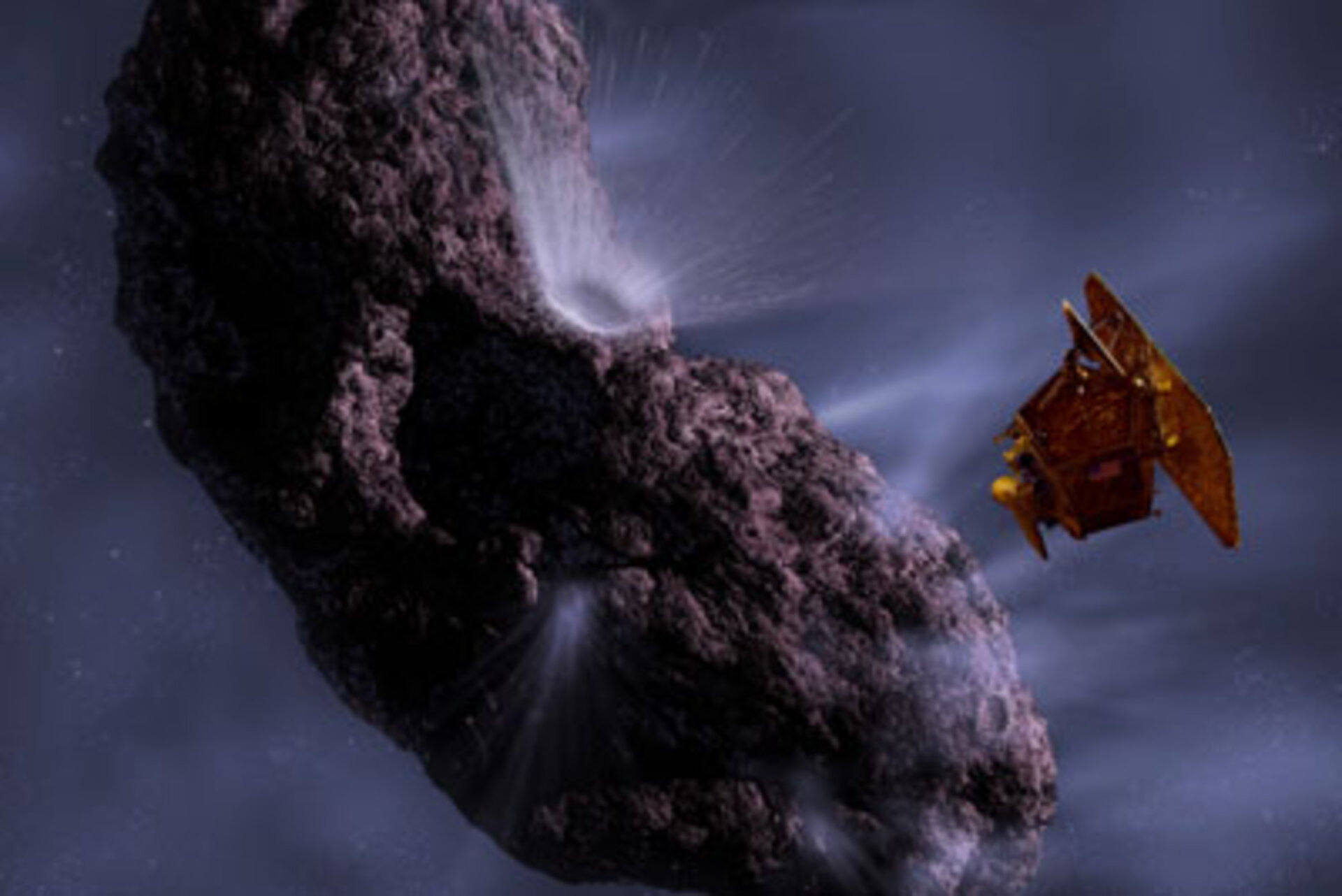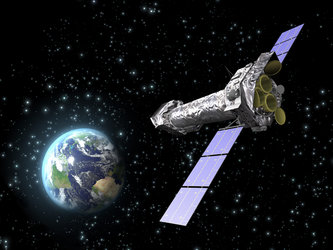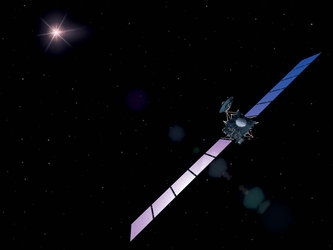Deep Impact: to the heart of a comet with Europe’s contribution
ESA PR 33-2005. On 4 July 2005 at 07:52 CEST (Central European Summer Time) NASA’s Deep Impact mission, launched on 12 January this year, will start exploring a comet's interior by creating a crater with an impactor spacecraft, allowing another spacecraft to look deep inside the comet during a fly-by immediately afterwards.
For the first time the crust and the interior of a comet can be studied. As the material inside the comet's nucleus is pristine, it will reveal new information on the early phases of the Solar System. This is a natural precursor to ESA’s Rosetta cometary mission which seeks to perform the subtler task of orbiting and landing on a comet.
The impact will produce a crater the diameter of which is expected to range between a house and a football stadium, and with unknown depth. Ice and dust debris will be ejected from the crater, revealing fresh material beneath. Sunlight reflecting off the ejected material will provide some brightening that will fade as the debris dissipates into space or falls back onto the comet.
Dramatic images of the impactor spacecraft’s final approach and possibly of the impact itself and the crater will be sent to Earth in near-real time by both spacecraft.
Several observatories in orbit around Earth, and countless Earth-bound telescopes will work in concert for an unprecedented global observation campaign to collect a maximum amount of additional data and information on this event.

ESA will use both its Rosetta comet chaser and the XMM/Newton Observatory to observe the impact. ESA’s 1-metre OGS telescope on Tenerife (Canary Islands , Spain) will also be used for observations from ground. Also the NASA/ESA Hubble Space Telescope will observe the event.
The European Southern Observatory (ESO) will direct all seven telescopes it operates at the La Silla and Parañal sites in Chile towards the event, amongst them the Earth’s currently most powerful and high-resolving instruments in the infrared and visible wavelength ranges.
Initial data from these European observations will be available on 4 and 5 July beginning a few hours after the impact, enhancing the images and information from the Deep Impact spacecraft itself.
Highlights of the day will be:
4 July
07:15 CEST (05:15 GMT)
ESA TV live event (approx 60 minutes) based on NASA-TV plus studio interviews and inserts. with links to ESO, MPI Lindau (Rosetta), ESA/ ESAC (XMM/Newton) and ESA/ESOC (mission operations).
09:30 CEST (07:30 GMT)
ESA TV update on European observations (approx 20 minutes).
10:00 CEST (08:00 GMT)
NASA media briefing – live rebroadcast by ESA TV (approx 30 minutes).
18:00 CEST (16:00 GMT)
ESA TV update with first Hubble image (black and white) (approx 20 minutes).
20:00 CEST (18:00 GMT)
NASA media briefing – live rebroadcast by ESA TV (approx 30 minutes).
5 July
06:00 CEST (04:00 GMT)
ESA TV update with first ESO colour images
The live portion of the ESA TV production and the NASA Media Briefing (07:15-10:30 CEST) can be witnessed at various ESA centres and elsewhere in Europe: ESA/ESOC in Darmstadt (Germany), ESA/ESTEC in Noordwijk (the Netherlands), ESA/ESRIN in Frascati (Italy), ESA/ESAC in Villafranca (Spain), La Cité de l’Espace in Toulouse (France), ESA Head Office in Paris (France) and Le Parc-aux-Etoiles in Triel-sur-Seine (France), ESO in Garching, Munich (Germany) and PPARC, London, United Kingdom. In most places experts will be available for interviews.
Media representatives wishing to attend the event at any of the centres are kindly requested to fill in the attached accreditation form and return it to the relevant contact person listed for each venue.
(*) ESA Television downlink parameters will be posted at http://television.esa.int, about 72 hours before the event For further information and a daily update of the transmission schedule, visit our website at http://television.esa.int.
For all TV enquires, contact:
Claus Habfast,
Tel +31 71 565 3838,
Fax +31 71 565 6340,
e-mail claus.habfast@esa.int.
For further information:
ESA Media Relations Division
Tel. + 33 1 5369 7155
Fax. + 33 1 5369 7690








